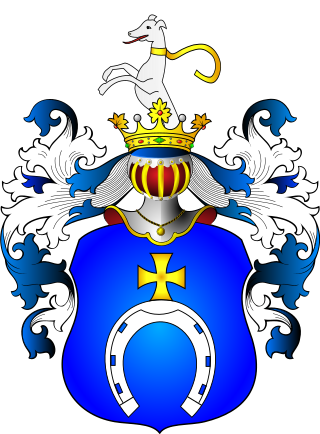
Pobóg is a Polish coat of arms that was used by many noble families in medieval Poland and later under the Polish–Lithuanian Commonwealth.
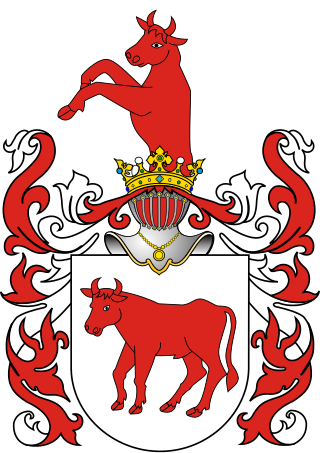
Ciołek is a Polish coat of arms, one of the oldest in medieval Poland. It was used by many szlachta (noble) families under the late Piast dynasty, under the Polish–Lithuanian Commonwealth, during the Partitions of Poland, and in the 20th century. The variant names "Siolek" and "Cialek" arose from miscommunication among early-20th-century Polish immigrants to the United States.
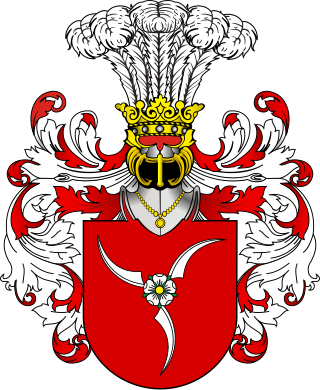
Rola is a Polish coat of arms. It was used by several szlachta families in the times of the Kingdom of Poland and Polish–Lithuanian Commonwealth.
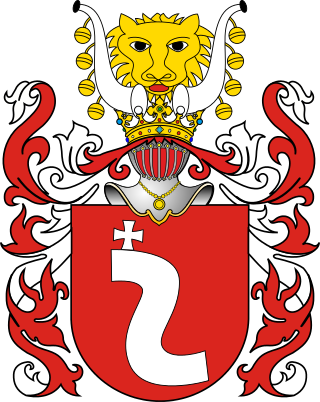
Srzeniawa is a Polish coat of arms. It was used by several szlachta families in the times of the Kingdom of Poland and the Polish–Lithuanian Commonwealth.
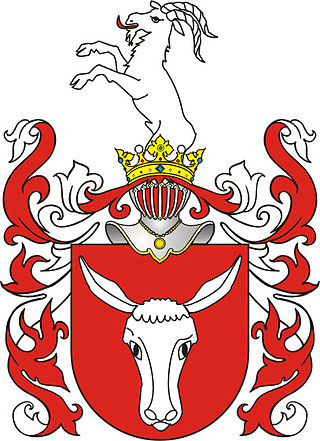
Półkozic is a Polish coat of arms. It was used by several szlachta families in the times of the Polish–Lithuanian Commonwealth.

Odrowąż is a Polish coat of arms of probably Moravian origin. It was used by many noble families known as szlachta in Polish in medieval Poland and later under the Polish–Lithuanian Commonwealth, branches of the original medieval Odrowążowie family as well as families connected with the Clan by adoption.

Łodzia is a Polish coat of arms. It was used by many noble families of the Kingdom of Poland and the Polish–Lithuanian Commonwealth. A variant serves as the coat of arms of the city of Łódź. It's a classic example of the so-called canting arms well known in European heraldry as it was borne by the medieval lords de Łodzia and their clan. Hence the boat in the shield, clearly alluding to the estate's name literally meaning Boat. Coats of Arms in the Polish Lithuanian Commonwealth were a symbol of a heraldic clan.
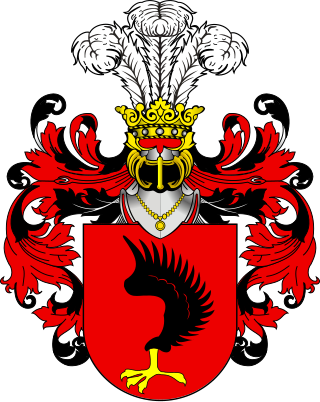
Kopacz is a Polish coat of arms. It was used by several szlachta families in the times of the Kingdom of Poland and Polish–Lithuanian Commonwealth.
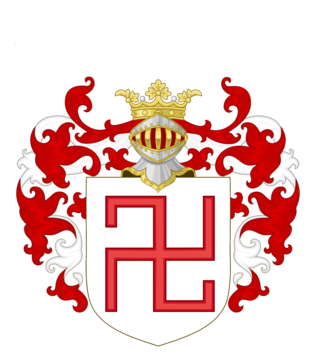
Boreyko is a Polish coat of arms. It was used by several szlachta families in the times of the Polish–Lithuanian Commonwealth.

Polish heraldry is the study of the coats of arms that have historically been used in Poland and the Polish–Lithuanian Commonwealth. It treats of specifically Polish heraldic traits and of the Polish heraldic system, contrasted with heraldic systems used elsewhere, notably in Western Europe. Due to the distinctive ways in which feudal societies evolved, Poland's heraldic traditions differ substantially from those of the modern-day German lands and France.
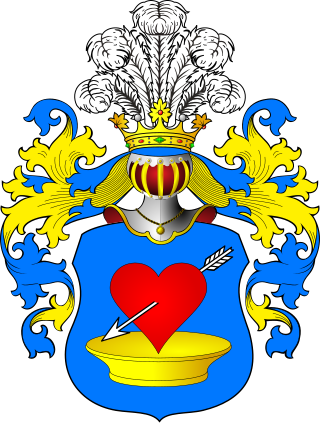
Przyjaciel also known as "de Pryjatel" and "Amicus" is a Polish coat of arms. It was used by several szlachta (noble) families under the Kingdom of Poland and the Polish–Lithuanian Commonwealth.

Korwin is a Polish coat of arms. It was used by several szlachta families in the times of the Polish–Lithuanian Commonwealth and by the Russian Counts Korwin-Litwicki tracing their origin back to Empress Catherine the Great.

Gozdawa is a Polish nobility Coat of Arms. It was used by several szlachta families in the times of the Kingdom of Poland and the Polish–Lithuanian Commonwealth.
The uses of heraldry in Belarus is used by government bodies, subdivisions of the national government, organizations, corporations and by families.
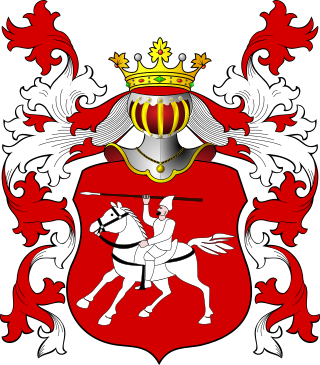
Abgarowicz is a Polish coat of arms of Wallachian origin. Borne by several families of the Polish gentry during the times of the Polish–Lithuanian Commonwealth, it is most commonly associated with three clans of Armenian origin: the Abgarowicz, Wartanowicz and Zachariasiewicz.

Czewoja II is a Polish coat of arms. It was used by several szlachta families in the times of the Kingdom of Poland and the Polish–Lithuanian Commonwealth. A variant of the Czewoja coat of arms.

Ginwiłł is a Polish coat of arms. It was used by several szlachta families in the times of the Polish–Lithuanian Commonwealth.
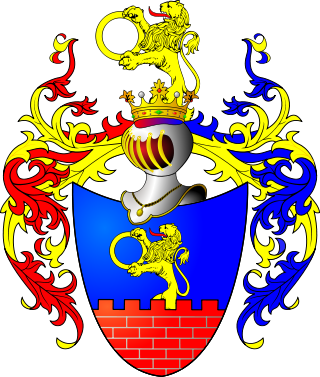
Prawdzic (Prawdzik) was historically a Polish coat of arms. It was used by the nobility clans and later szlachta families in the times of the Kingdom of Poland (1385–1569) and Polish–Lithuanian Commonwealth.
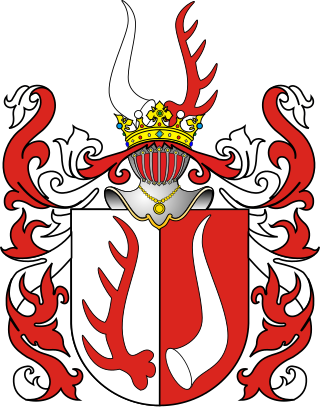
Rogala is a Polish coat of arms, likely imported from Germany to Poland in 1109 by the Rogala or the Ribersztein family, that then added the second horn. It was used by several szlachta families in the times of the Polish–Lithuanian Commonwealth.

Kur II is a Polish coat of arms. It was used by several szlachta families in the times of the Polish–Lithuanian Commonwealth.



















